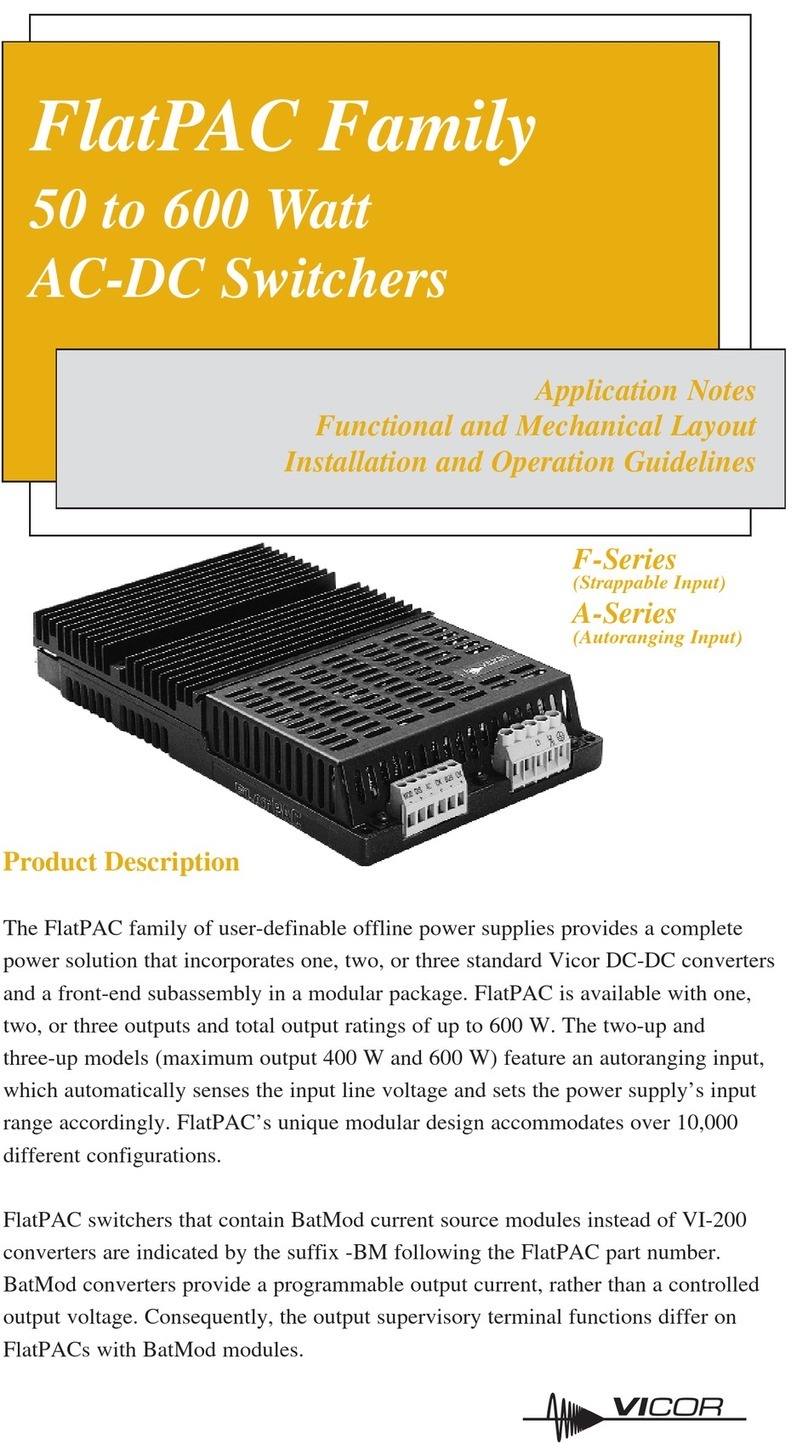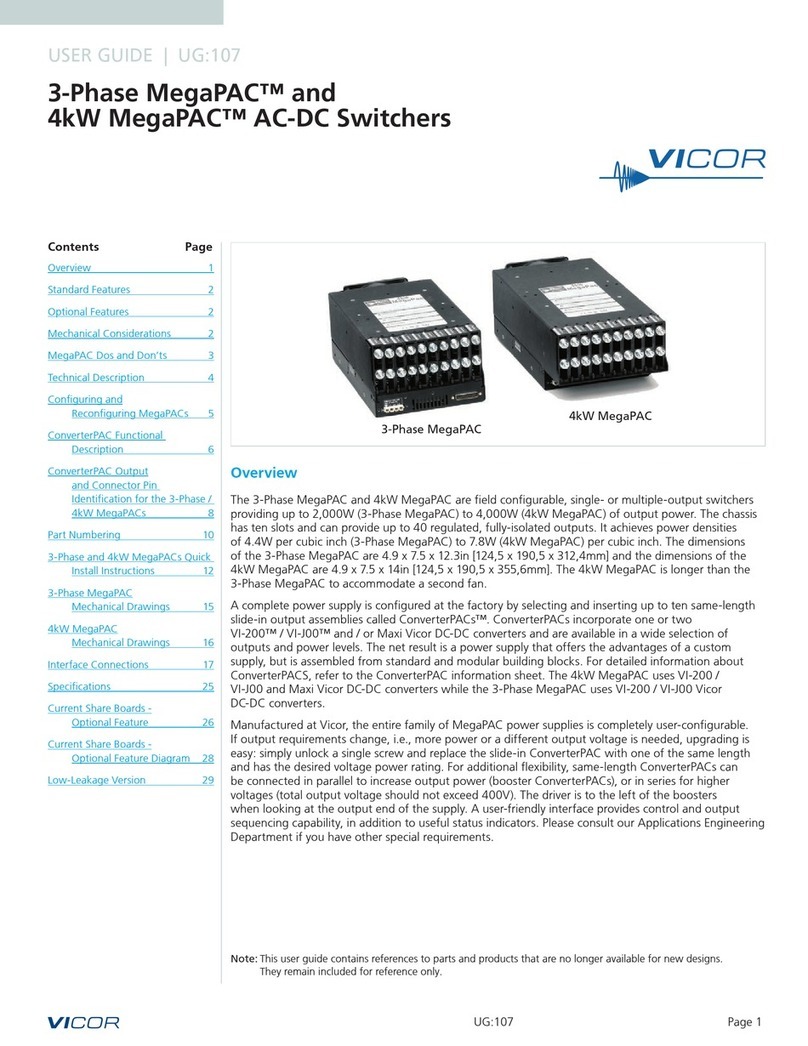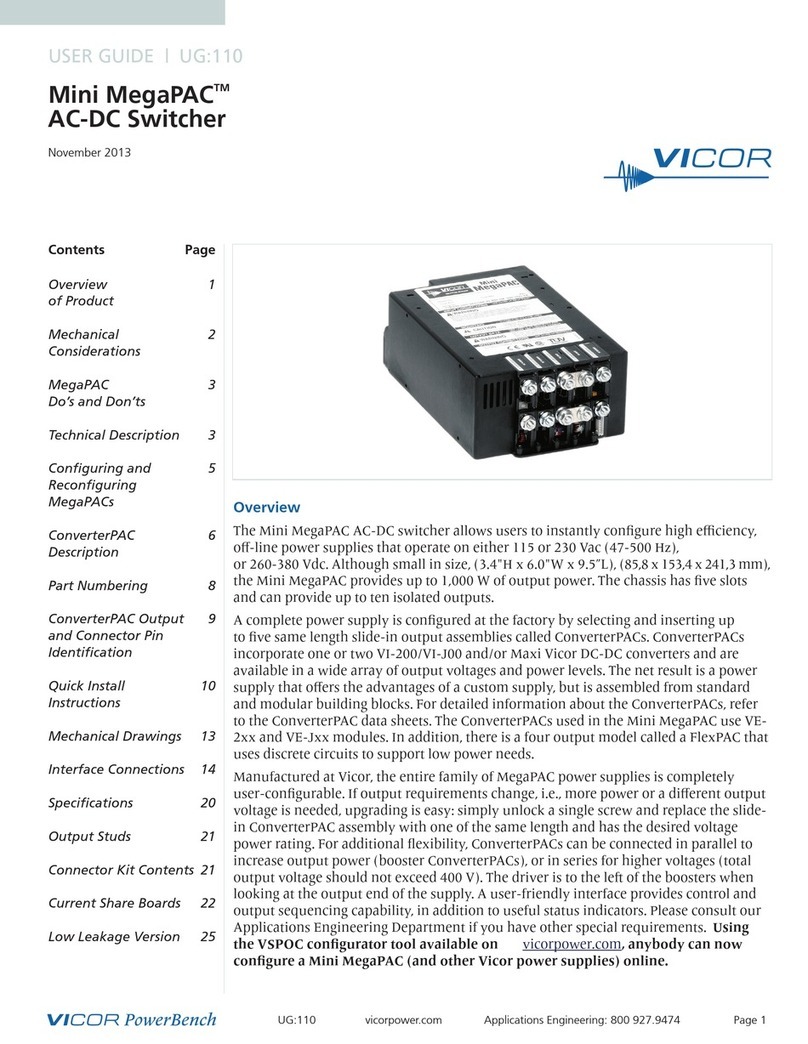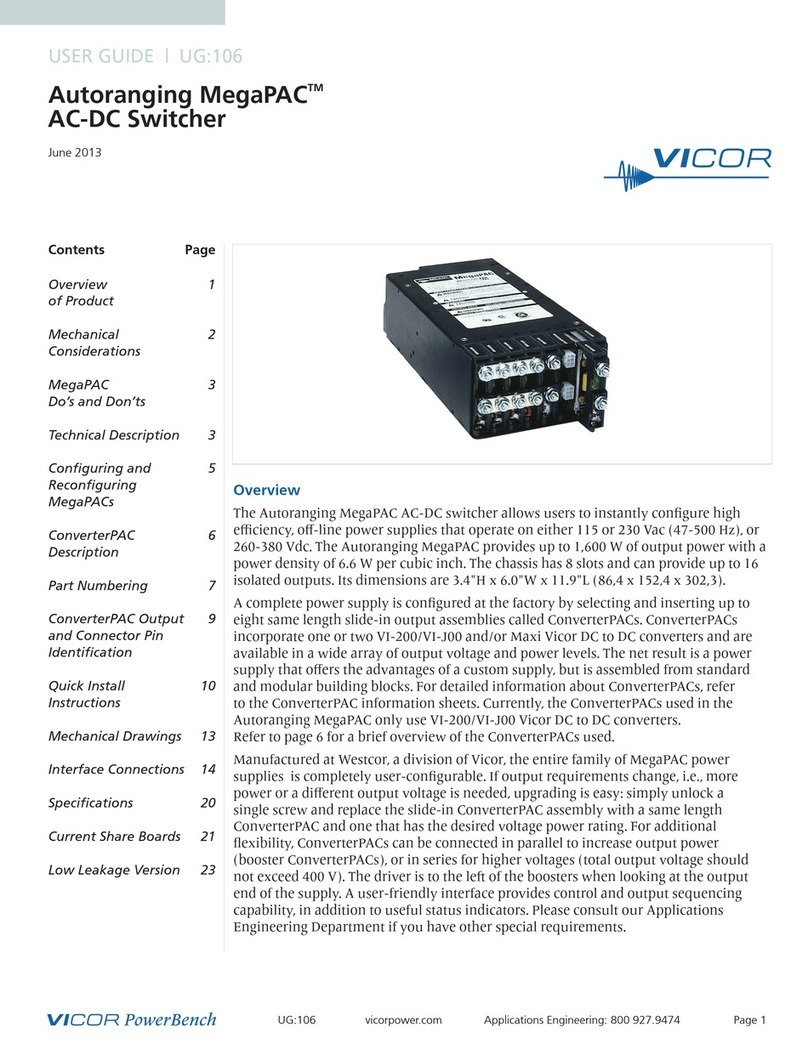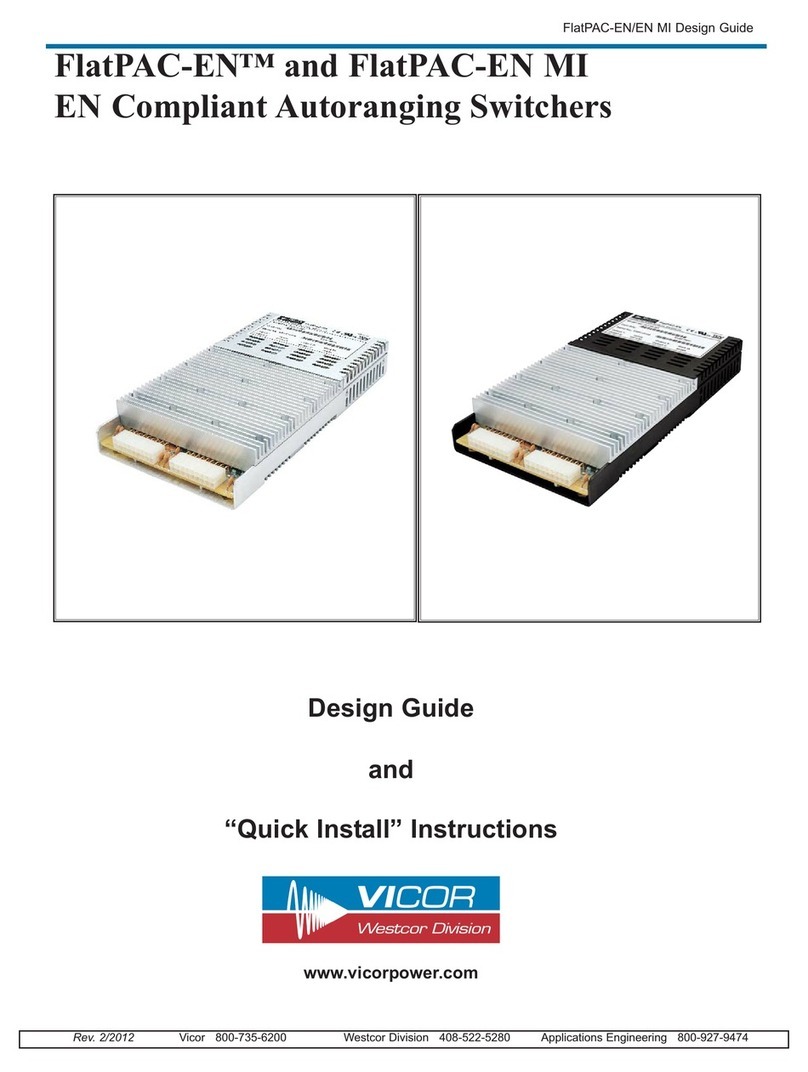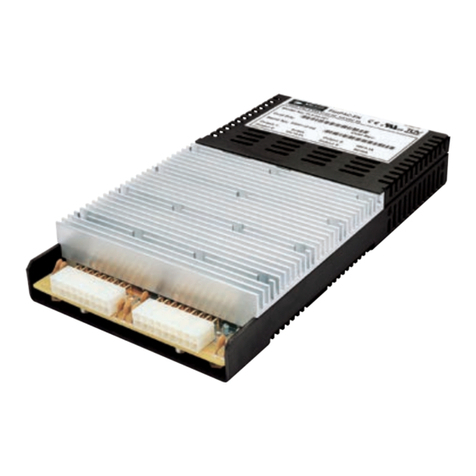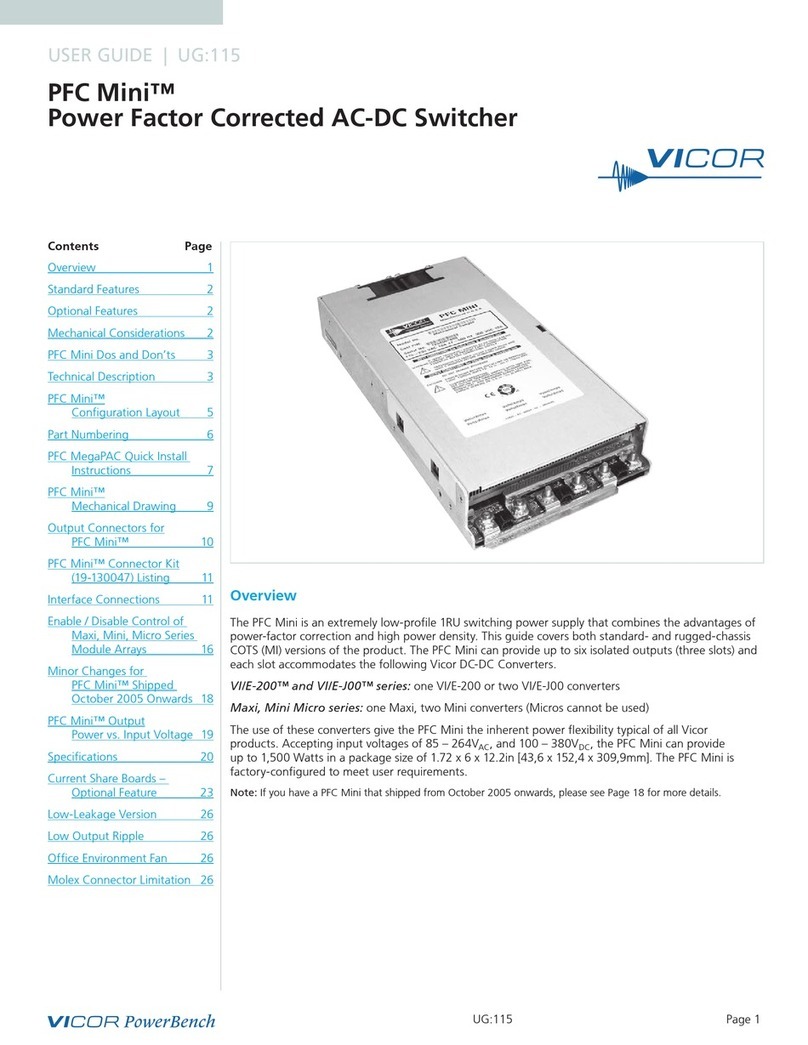
UG:119 Page 4
For power expansion, use booster ConverterPACs™. Viewing the unit from the output terminal side,
always insert boosters to the right side of the driver.
Do not use boosters as independent outputs. Disconnecting bus bars will damage
booster ConverterPACs.
For booster arrays, do not remove bus bars.
Always ensure that output hex-nuts are properly torqued before applying power to supply.
Run the output (+/–) power cables next to each other to minimize inductance.
Wait five minutes after shutting off power before inserting or removing ConverterPACs.
The MegaPACs does not have user serviceable components. They must be returned to the factory
for repairs. Contact Customer Service for a RMA number before returning the unit. Do not attempt
to repair or modify the power supply in any manner other than the exchange of ConverterPACs as
described in this Design Guide.
Insert proper fault protection at power supply input terminals (i.e., a fuse).
Use proper size wires to avoid overheating and excessive voltage drop.
Never loosen the inner nut on a ConverterPAC.
Verify output nuts are tight before powering up.
FinQPACs™ require two slots each because of the larger heat sink attached to dissipate the extra
heat generated by the higher-power Maxi module. Refer to Page 8 for more information on which
ConverterPACs can be used.
Technical Description
The PFC MegaPAC-EL™ and PFC MegaPAC-HPEL™ chassis consists of an offline single phase,
power-factor-corrected front end, EMI filter, cooling fan, low-noise filters, customer interface and
associated housekeeping circuits. Input AC mains voltage (L1, L2 and GND) is applied to a terminal
block. The input current is passed through an EMI filter designed to meet conducted noise limit A
specifications of FCC Part 15, VDE 0871 and EN55022 Class A. At start up, inrush current is limited by a
PTC thermistor. The PTC is shunted out shortly after initial power up by a DC bus voltage Sense circuit
driving a relay. After rectification, the input voltage is put through a boost converter that keeps the AC
input current sinusoidal and synchronized with the AC input voltage (in compliance with EN61000).
The boost converter delivers regulated high voltage DC to the hold-up capacitors and backplane.
The backplane supplies power to a variety of ConverterPAC assemblies that provide the desired
regulated outputs.
Voltage conversion in the output assemblies is achieved by the Vicor family of Zero-Current Switching
(ZCS) DC-DC converters. These are forward converters in which the main switching element switches
at zero current. This patented topology has a number of unique attributes: low-switching losses;
high-frequency operation resulting in reduced size for magnetics and capacitors; excellent line- and
load- regulation; wide-adjustment range for output; low EMI / RFI emissions and high efficiencies.
At initial power up, the PFC MegaPAC-EL and PFC MegaPAC-HPEL outputs are disabled to limit the
inrush current and to allow the DC bus potential to settle out to the correct operating level.
A low-power flyback converter operating with PWM current-mode control converts the high-voltage
DC bus into regulated low voltage to power the internal housekeeping circuits and DC cooling fan. The
internal housekeeping VCC comes up within two seconds after the application of input power. Once the
high-voltage bus is within its limits, the AC OK signal asserts to a TTL “1” indicating the input power is
OK and enables the power outputs. An auxiliary VCC output of 5VDC sourcing up to 0.3A is provided for
peripheral use.
